29+ Understatement Examples to Download
The air was thick with tension as the two rivals approached each other on the battlefield. Their eyes locked in a fierce gaze, each silently sizing up the other. Suddenly, a voice broke the silence, but it was not what either expected. “I’m not sure if you noticed, but I think we might be in a bit of a disagreement,” said one with a sly grin. This unexpected remark, a clever use of understatement, not only diffused the tension but also revealed the speaker’s wit and cunning. Understatement has the power to surprise and disarm, to challenge and subvert our expectations. In this article, we’ll explore the world of understatement and its many uses in literature, art, and everyday life.
1. Understatement and Overstatement in Closing Arguments
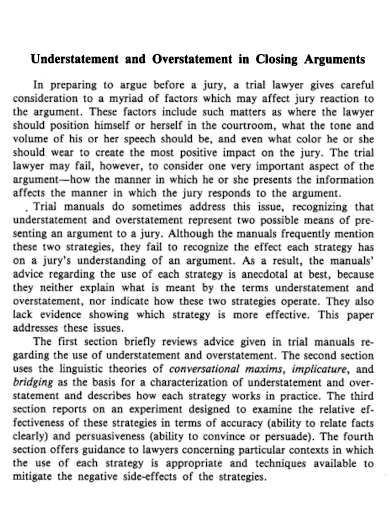
law.lsu.edu
2. Substantial Understatement Penalty
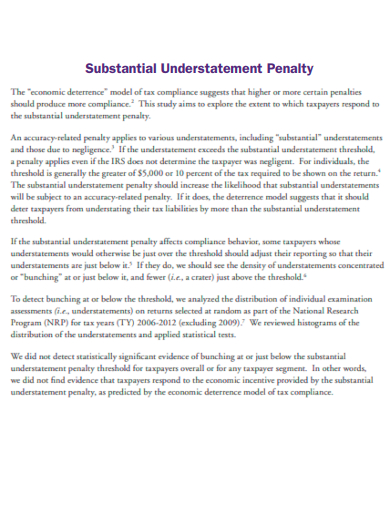
irs.gov
3. Understatement Speech Analysis
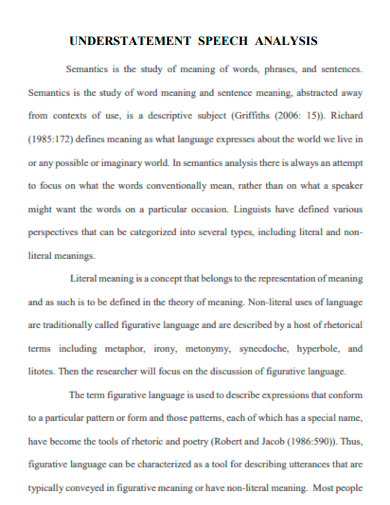
ac.id
4. Researching Understatement in the History
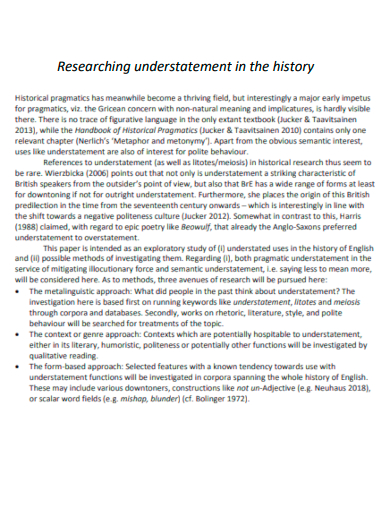
universiteitleiden.nl
5. Understatement in Feminist Science Fiction
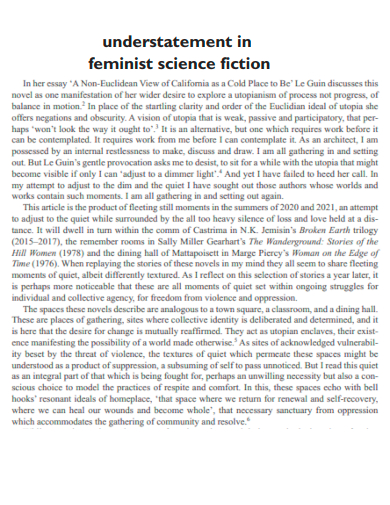
sagepub.com
6. Overstatement and Understatement
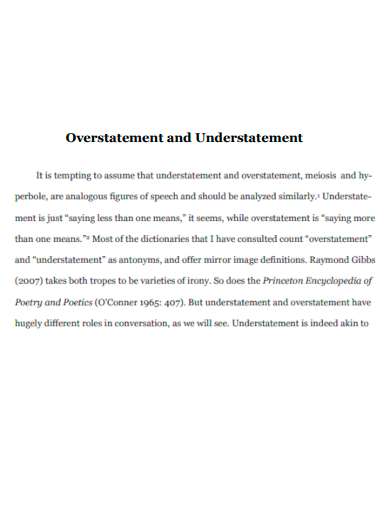
lsa.umich.edu
7. Aesthetics Look at Understatement
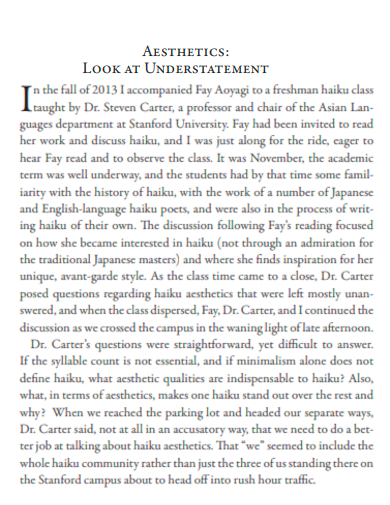
modernhaiku.org
8. Understatement Lesson Plan
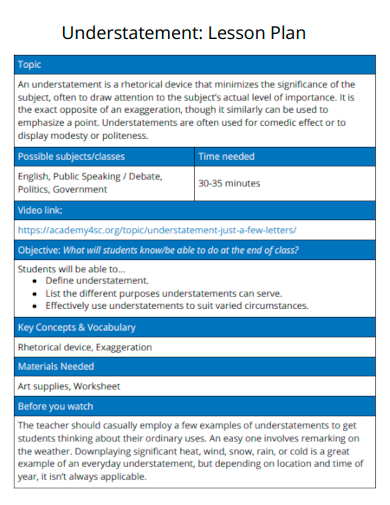
academysc.org
9. Identifying Hyperbole and Understatement
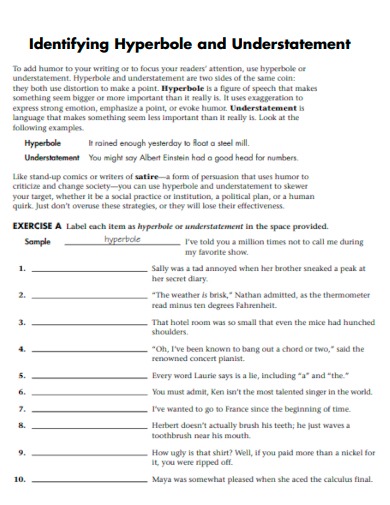
rcovelli.com
10. Semantic Pragmatic Study of Understatement
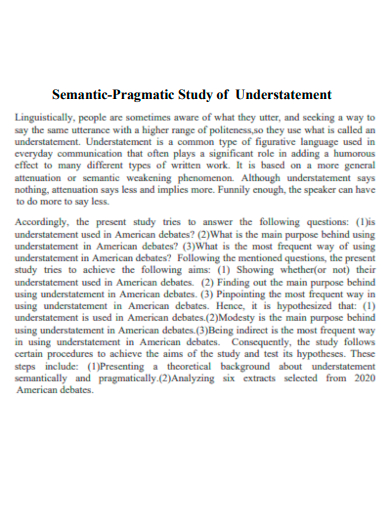
palarch.nl
11. Assessment on Understatement of Value

legislature.ky.gov
12. Ideologically Induced Understatement
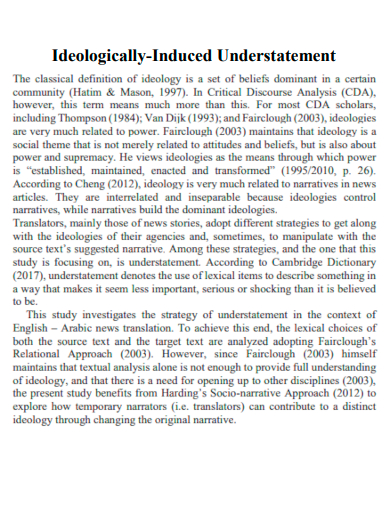
ekb.eg
13. Understatement of Income Tax
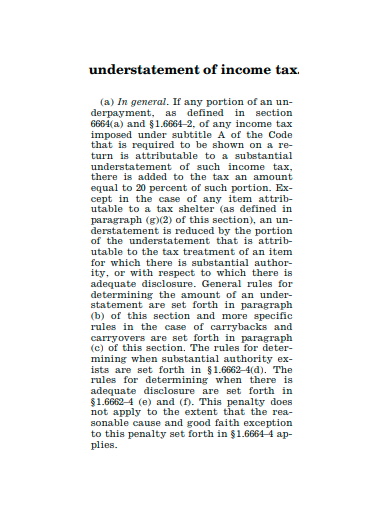
govinfo.gov
14. Understatement in Media Coverage
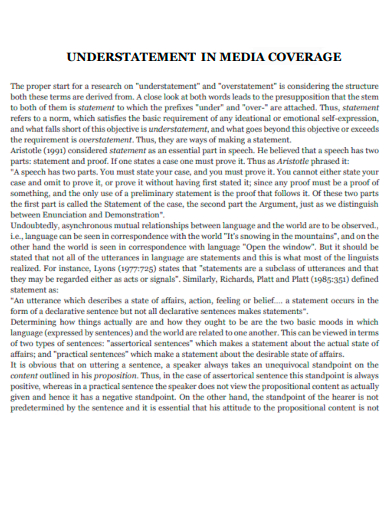
neliti.com
15. Civil Procedures Substantial Understatement
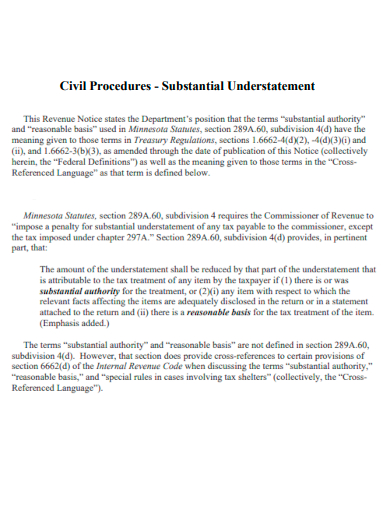
revenue.mn.us
16. Understatement Linguistic Strategies at Work
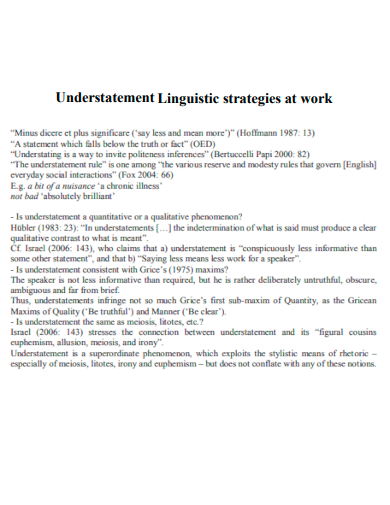
humnet.unipi.it
17. Study of Understatement as Adaptation
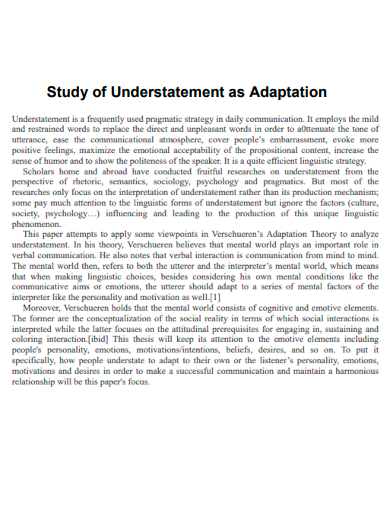
aeescience.org
18. Formal Understatement
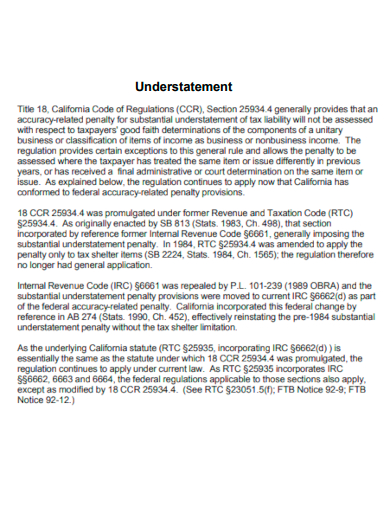
ftb.ca.gov
19. Understatement and Tautology
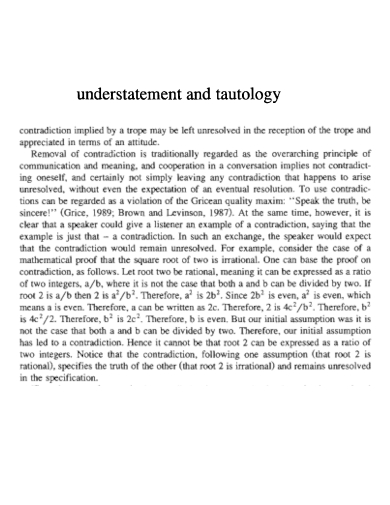
utoronto.ca
20. Understatement of Serious Deficiencies
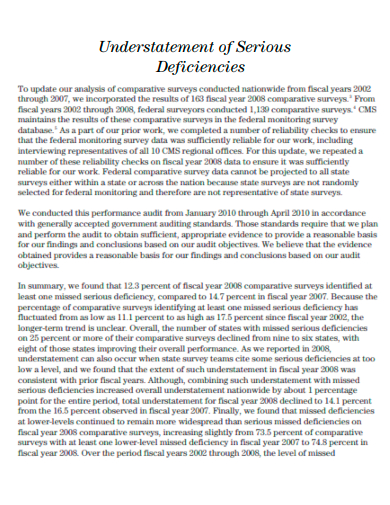
gao.gov
21. Understatement Applicable to the Taxpayer

sars.gov.za
22. Understatement Example
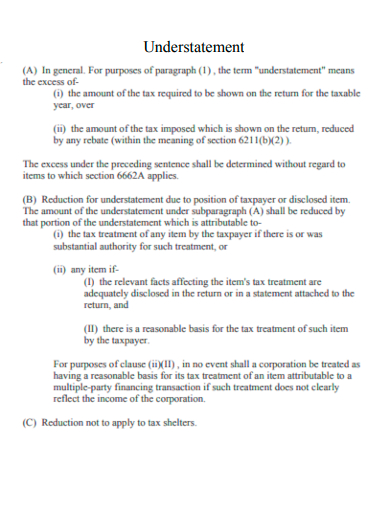
bradfordtaxinstitute.com
23. Draft Guide to Understatements
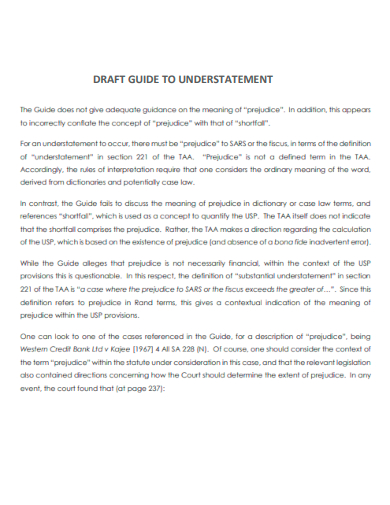
cdn.ymaws.com
24. Understatement of Liability
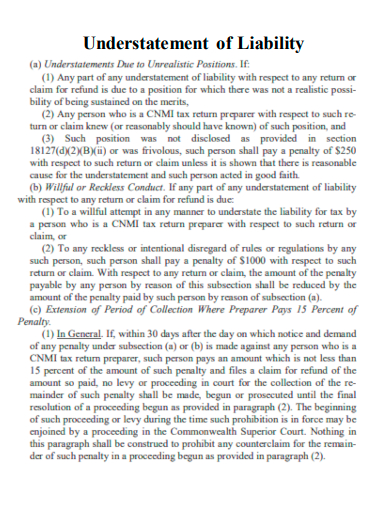
cnmilaw.org
25. Qualify for Relief from an Understatement
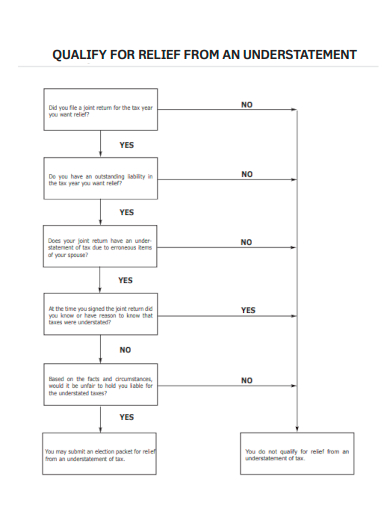
revenue.pa.gov
26. Outstanding is an Understatement

gwinnettcounty.com
27. Theoretical Reflections on Ostentation vs. Understatement
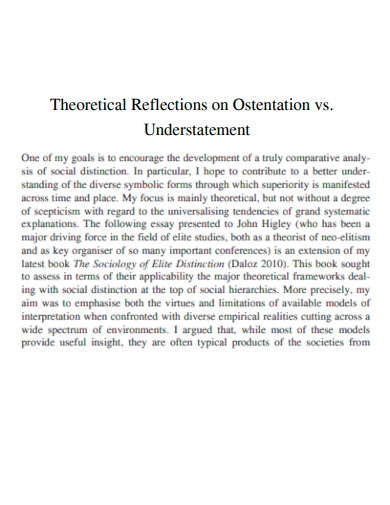
ssoar.info
28. Implicature Communicated by Understatement
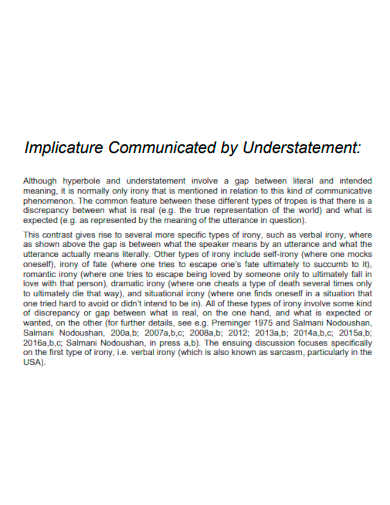
semanticsarchive.net
29. Understatement Reassessing Cyber Risks
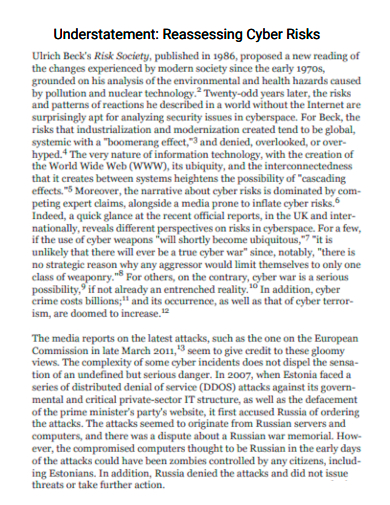
usf.edu
30. Understatement Assembly
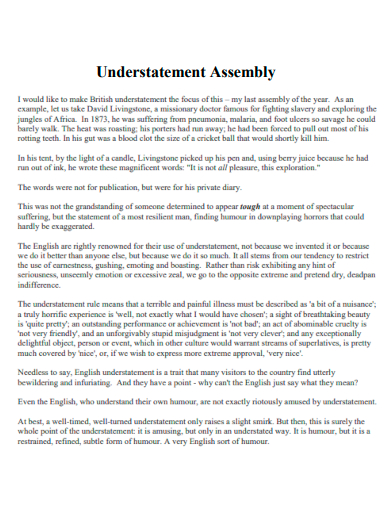
mtsn.org.uk
What is an Understatement?
An understatement is a figure of speech where a writer or speaker deliberately downplays or minimizes the significance or importance of something. It involves saying less than what is actually meant or expressing an idea or emotion in a restrained or subtle manner. Understatement can be used to create a sense of irony, or humor, or to convey a deeper emotional impact. It is often used in literature, film, and everyday communication as a way to add nuance or complexity to the message being conveyed.
How to write an Understatement?
To write an understatement, you can use language that minimizes or downplays the significance of a situation, event, or idea. Here are some tips and some common elements for writing a text structure in understatement:
Step 1: Use language that is opposite to hyperbole
As an introduction, use language that is opposite to hyperbole, which exaggerates or overstates. Instead, choose transition words that are modest or restrained.
Step 3: Use irony to convey your understatement
Use irony to convey your understatement. For example, you can say “it’s just a flesh wound” to downplay a serious injury in a humorous way.
Step 4: Use litotes
Use litotes, a form of understatement that involves using a negative to express a positive. For example, “he’s not bad looking” to describe someone who is attractive.
Step 5: Use a subtle tone to convey your message
Use a subtle tone to convey your message. Avoid being too explicit or direct in your language.
Step 6: Use understatement sparingly and in the appropriate context
Use understatement sparingly and in the appropriate context. Overusing it can diminish its impact.
FAQs
How is understatement used in literature?
In literature, understatement is often used to create tension, suspense, or humor. It can be used to make a serious situation seem less significant or to emphasize the severity of a situation in a subtle way. It can also be used to reveal a characterization’s thoughts, emotions, or intentions in a more indirect or nuanced way.
Can understatement be used in everyday communication?
Yes, understatement is commonly used in everyday communication as a way to soften criticism or to deliver bad news in a more palatable way. It can also be used to express a subtle form of humor or verbal irony in conversation.
What is the opposite of understatement?
The opposite of understatement is hyperbole, which involves exaggerating or overstating the significance or importance of something. Hyperbole is used to create emphasis or to make a point more strongly.
In conclusion, understatement is a powerful rhetorical device that can be used to add nuance, complexity, and depth to writing and communication. Whether it’s used to create humor, irony, tension, or emotional impact, understatement has the ability to surprise and disarm its audience. You can read about Audience Analysis here to understand how to write your understatement better for different types of audiences. By downplaying or minimizing the significance of something in a subtle or indirect way, understatement can create a more nuanced and sophisticated message that engages and challenges the reader or listener.


